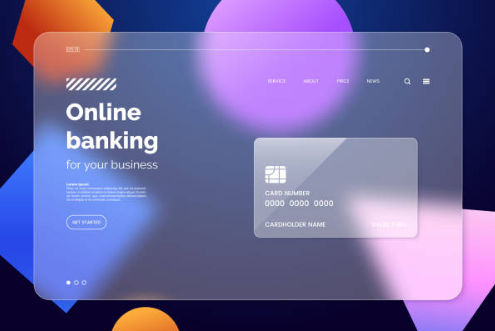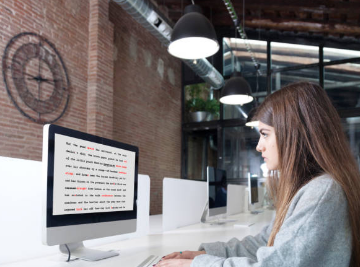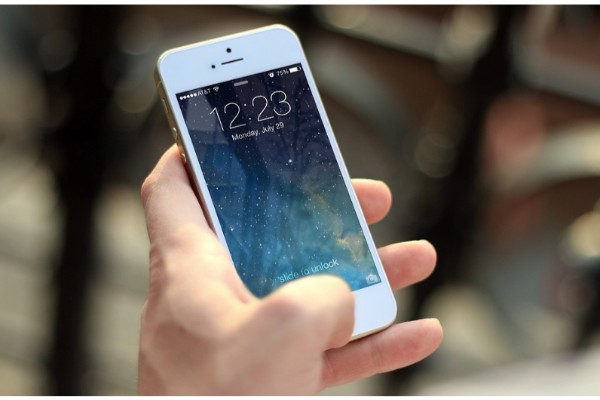During proctored exams, Canvas will be able to detect the opening and closing of various tabs. Your browser will flag you if you open multiple tabs simultaneously because it interprets this as an active attempt to find information online or from another source. Continue reading, you’ll learn more about canvas.
Table of Contents
Can Canvas Detect New Tabs?
No, Canvas cannot detect new tabs or track activities inside other applications during non-proctored tests. However, Canvas’ quiz log records any triggered events during tests, including navigation inside and outside the Canvas quiz page. New tabs can be avoided and detected during quizzes or tests that are proctored using software like Respondus Monitor and Proctorio.
Despite this, Canvas is unable to recognize any particular web pages that a student visits outside of the Canvas application. The only information it can record is the time the student left the quiz page and the time they returned.
The event logs from a quiz event that a student recorded on Canvas are displayed in the image above. As you can see, it keeps track of all of the student’s actions, including reading and responding to questions, and it also displays when they left and returned from the quiz page.
What is Canvas?
A learning system called Canvas makes it simple for numerous institutions to manage online learning. The teachers may post information, course materials, assignments, grades, and much more for their students online using this course management system. All over the world, it is well-known in colleges and universities. Exams to gauge students’ progress may be given by professors using Canvas, which also has plagiarism-detecting tools to catch cheating. Now, you might be curious to know how it operates. To view the following query, scroll down.
Can Canvas Detect Switching Tabs?
Canvas can detect and log events, such as navigation from the Canvas quiz page, even though it cannot recognize specific actions like tab switching in non-proctored tests. However, during proctored exams, Canvas uses proctoring tools like Respondus Monitor and Proctorio to limit and disable computer activities like tab switching. It also uses the webcam and microphone of the computer to record the testing environment for the student.
In non-proctored exams, Canvas can keep track of actions like reading and responding to questions as well as leaving and coming back to the test page. Copier attempts are also recorded and reviewed by the instructor after the tests.
Additionally, any attempts to view other pages inside of Canvas while a test is still taking place are logged for instructor review.
In the case of proctored exams, Canvas makes use of proctoring tools like Proctorio and Respondus Monitor to prevent cheating by students. Respondus Monitor, which comes with the LockDown Browser, can limit computer actions like copying and pasting, minimizing or maximizing, opening and switching tabs, and more. It also makes use of the webcam and microphone on the computer to record the student in their testing environment.

Additionally capable of screen recording, Respondus Monitor also disables shortcut key usage and prevents the opening of any other programs on the computer.
What Canvas Or Blackboard Can Monitor During Exams?
It’s crucial to remember that even though online exam portals cannot tell when you open new tabs, the instructor can tell when you leave a page. They are able to observe that the page is not being interacted with.
They can tell, for instance, when the mouse cursor is no longer hovering over the screen. This is very unreliable because it can be outside the window while one is actually working on the provided work, but it will appear the same to the instructor who is watching.
When using online exam portals, instructors can also see what other students are doing. These activities consist of the student’s login frequency and the length of time spent on the website after logging in.
The pages that the students access and their overall levels of activity throughout the course are also available to them. The instructor can determine which content each student has accessed and which they have not through the monitoring of activities.
This depends on whether proctoring software is being used to monitor the Canvas or Blackboard exam. The majority of universities proctor exams, so for the purposes of this discussion, we will assume that this is the case.
Depending on the type of proctoring being used, what professors can see during an online exam.
Live Online Proctoring
While the candidates are taking a live proctoring test, audio-video and screen-sharing feeds are being watched in real-time. Online exam portals that use this type of proctoring are able to both detect and completely prevent tab switching.
Advanced Automated Proctoring
It is the most recent type of proctoring. Screen share feeds and audio-video are recorded during exams, just like with online proctoring.
The system additionally keeps an eye on the feeds in this form to look for any suspicious activity. By using audio-visual analytics, this is accomplished.
Recorded Proctoring
This method lacks a proctor to continuously monitor the feed. The screen share feed and the audio-video of the candidates’ test are both recorded while they are taking it.
The instructor can then use annotations, fast-forward through these records, and flag suspicious activity.

What Can Professors See on Blackboard and Canvas?
The prevalence of online exam cheating has increased along with technological advancement. Due to this rise, the majority of organizations and businesses now track and observe student behavior during assessments.
This is being done in an effort to stop them from cheating and using other unfair external methods, like accessing other websites, on-drive resources, PDFs, and using external devices.
A number of websites and web pages that will assist professors in keeping an eye on ongoing class text have been developed as a result of this determination to stop cheating. Among them is Mettl. Professors have access to the candidates’ screens through their Mettl accounts and can chat with them.
This makes it possible for professors to keep an eye on student activity from the time they open the screen and begin working on the assignment until they turn it in. Professors can also see student Canvas activity and determine if you have abandoned a page. If they do not observe any ongoing activity on the screen, they will do this.
Mettl raises caution flags in order to be more effective in identifying unusual activity. Candidates may experience this if they start a conversation with someone in the testing area, if they move out of the camera’s view, or if they attempt to access the internet.
Additionally, Mettl forbids test takers from copying test material from the test screen. Mettl works with the involved institutions to help carry out online assessments. You can learn more about online proctoring by visiting Mettl.
Can Canvas Detect Screenshots?
Canvas is unable to identify screenshots taken on students’ computers during unattended exams. However, proctoring tools like Respondus Monitor and Proctorio make it simple to find, prohibit, and disable screenshots during proctored exams.
It’s important to note that during proctored exams, proctoring software like Respondus Monitor disables any shortcut keys and third-party screenshotting programs on the student’s computer.
Additionally, it logs all events for later review by instructors and records the student’s computer screen as well as the testing environment using the webcam and microphone on the computer.
Can Canvas Detect Split Screen?
No, Canvas is unable to recognize split screens during unattended tests unless the student clicks away from the open Canvas test page. Despite this, Canvas can quickly identify, record, and even prohibit split screens during exams proctored by programs like Respondus Monitor and Proctorio.
The LockDown Browser, which locks the students’ test environment on the computer and prevents them from running other programs, using shortcut keys, using virtual machines, taking screenshots, or even using split screens, serves as the foundation for Respondus Monitor.
Additionally, it makes use of the webcam and microphone on the student’s computer to record the user and alert the user to any suspicious activity. The computer screen is also recorded.
Can Canvas Detect Screen Sharing?
In non-proctored tests, Canvas is unable to identify screen sharing. Having said that, screen sharing during proctored exams can be easily detected, limited, and disabled thanks to proctoring solutions like Respondus Monitor and Proctorio.
Respondus Monitor, one of the many proctoring tools available, goes above and beyond to prevent students from cheating during exams while using their computers or even while sitting comfortably in their homes.

Respondus Monitor, which includes the LockDown Browser, limits computer activities like running additional programs, taking screenshots, using shortcut keys, and running virtual machines. It also makes use of the webcam and microphone on the computer to record the environment of the student and flags any suspicious activity for instructor review.
Can Canvas Detect Copy Paste?
As with the majority of contemporary learning management systems (LMS), Canvas integrates with some of the most well-liked plagiarism detection tools, including Turnitin and UniCheck, which compare copied text with databases like ProQuest, Google’s Index, and other databases to detect plagiarism.
Nonetheless, most expensive plagiarism detectors struggle to detect content paraphrased using programs like QuillBot. QuillBot uses cutting-edge artificial intelligence to alter phrase and sentence sequences, which these tools are unable to recognize.
Contrarily, plagiarism detectors only look for similar words and sentence structures, making it challenging to spot QuillBot-restructured sentences. Not all paraphrasing tools produce the best results; some merely swap out a few words for their synonyms.
Therefore, it is advised to double-check any paraphrased content before submission to prevent plagiarism flags.
Can Canvas Detect Phone Activity?
Canvas is unable to detect phone use during unattended tests. Nevertheless, proctoring tools like Respondus Monitor, which use a computer’s webcam and microphone to record students in their testing environment, can catch and flag phone use during proctored exams.
What Can Professors See on Canvas During Quizzes?
Canvas’ quiz log displays to professors all quiz page interactions, including viewing and responding to questions, leaving and returning to the quiz page. However, during Respondus Monitor-based proctored exams, professors can observe each student interaction both on their computers and in the testing environment at home.
During the unattended test, Canvas can only keep track of when students leave the quiz page and when they return. It is impossible for Canvas to know which pages students visit while using the non-proctored test.
The thorough log merely records any actions students took while taking tests on the system, but it can also detail any websites they may have accessed outside of the learning management system.
How to Take An Online Test on Blackboard?
Depending on how instructors have made the test available, you may take it on Blackboard. You will use the link provided by the instructor to access the assignment. Students should use the set passwords provided by some to access the test.
Once you have access to the test, you can take it. Before beginning a test, students must be aware of certain settings made by the instructor.
The number of retakes a student is permitted, the requirement that they finish a test in one sitting, the test’s timer, and the auto-submit feature are all customizable by instructors.
Students can view tests that have no time restrictions but are not required to turn them in. Students can select View assessment where they can view and add some work on the test. The student can then save, close that panel, and come back to it later to continue. When they are finished taking the test, they can submit it.

In testSs with limited time, students see Start Attempt instead of View Assessment. The time limit is usually displayed on the Details & Information panel. Before accessing the test, students must set the timer after choosing Start attempt.
If they’re not ready, students can cancel. If instructors allowed students to submit multiple attempts, time limits apply to each attempt. If students begin a timed test, it is automatically submitted when the allotted time has passed.
Using the online exam portals to take the test depends on how the test is laid out. It is possible to administer the test all at once. This indicates that a single screen is used to display the entire test. Time is saved using this approach.
Other methods the test can be presented by instructors include:
- Randomized questions: For each test attempt in this presentation, questions are given at random. This helps to some extent cut down on student cheating.
- One at a time: One question is brought up at a time in this presentation style. It takes a long time to use this method.
- Prohibit Backtracking: Students who have already completed and submitted their answers to the questions cannot change them in this presentation method.
Conclusion About Canvas
In the case of proctored exams, professors would be able to view all of the computer activity that students engaged in as well as any ongoing activities in the testing environment through the webcam and microphone of the computer.




